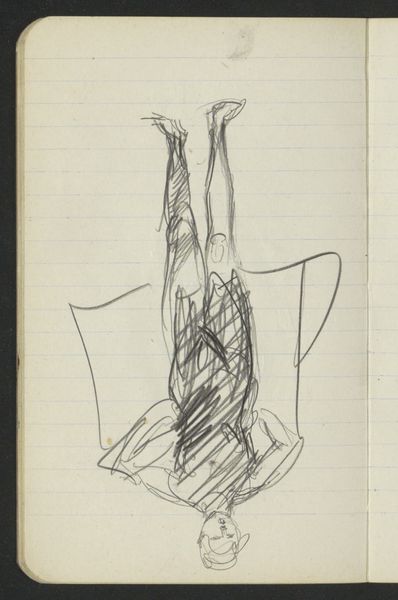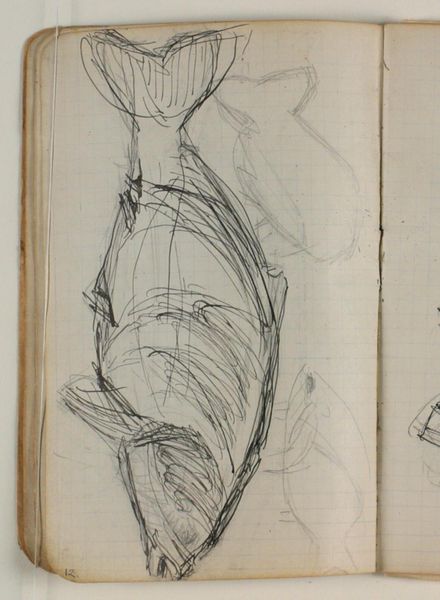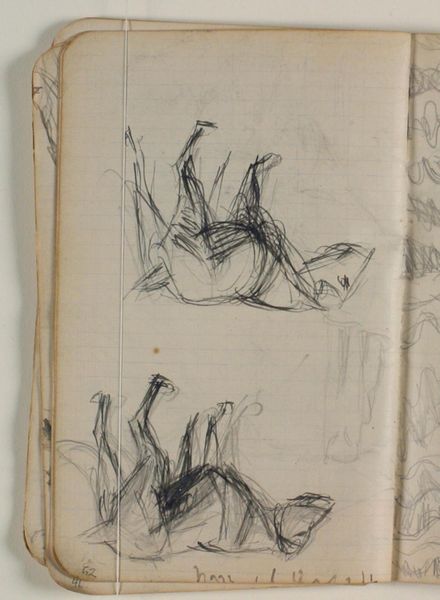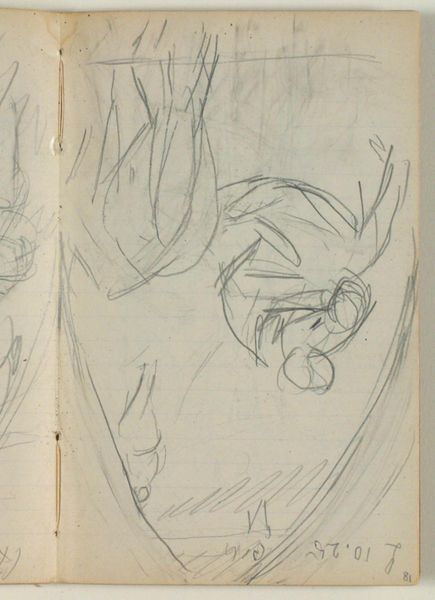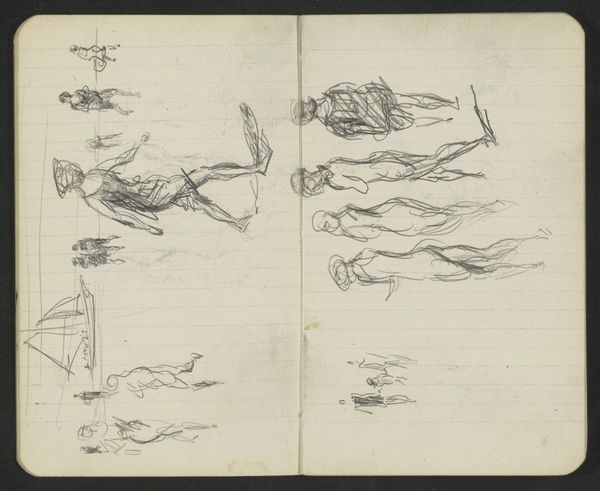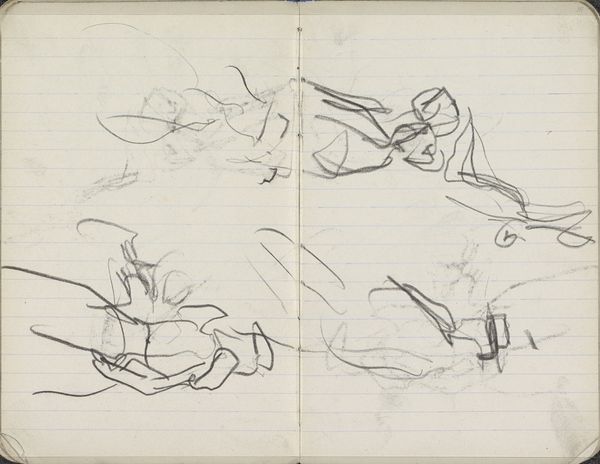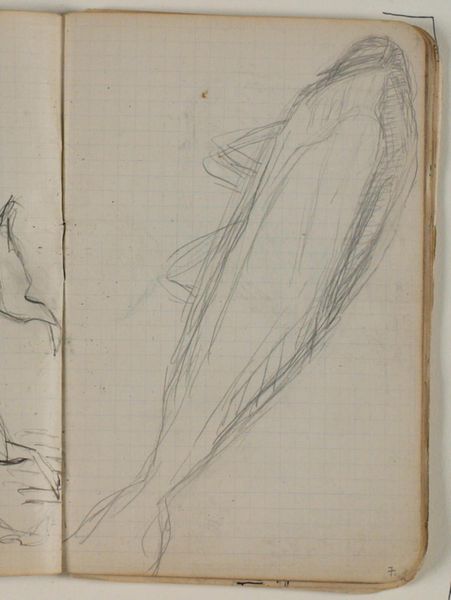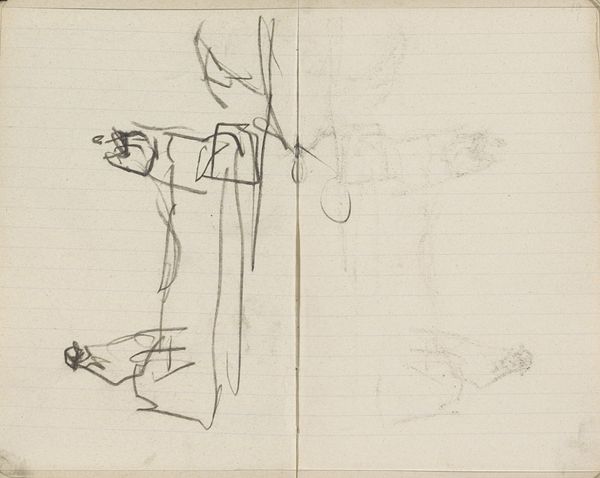
Copyright: Rijks Museum: Open Domain
Curator: Here we have Isaac Israels' "Twee lopende figuren, mogelijk op het strand," dating sometime between 1875 and 1934. It’s currently held in the Rijksmuseum collection. What’s your initial impression? Editor: A flurry of lines! There's a definite sense of movement and spontaneity. The figures, rendered in such a fleeting manner, suggest an exercise in capturing the essence of a gesture more than a realistic portrayal. The visible notebook lines add a compelling dimension too. Curator: Indeed. Israels, part of the Dutch Impressionist movement, often worked 'en plein air', capturing scenes of everyday life. Looking at the work through that lens, it raises questions about how sketches and preparatory works like these shape an artist’s practice. The notebook becomes a microcosm of the artistic process. Editor: The sketch itself reveals much about that process. The varying pressure of the pencil strokes creates a hierarchy of focus, drawing our eyes to certain points while letting others fade into suggestion. It almost resembles a musical score. Curator: And consider the material conditions that made this quick capturing possible—the ready availability of relatively cheap paper and pencils. Sketchbooks allowed artists a portability and immediacy that was previously constrained. How does that influence not just his output but the wider market for his art, blurring the boundaries between commodity and exploration? Editor: Fascinating to consider! Though my immediate inclination is to explore the intrinsic dynamism of the composition. The angular lines and fragmented forms, though simple, evoke the energy of figures in motion against a wind-swept beach. Note how he eschews complete outlines, implying form and volume through hatching and shading. It gives a feeling of lightness. Curator: But those formal qualities aren't developed in a vacuum! He has his own studio practice and relies on access to markets for both art supplies and his art once finished. Israels was painting and drawing during a massive growth in seaside leisure for workers in Western Europe and America. It brings the class politics and marketing to the forefront. Editor: True, we cannot ignore these contexts! Yet I can still appreciate the drawing as a standalone aesthetic artifact, you see? It encourages us to contemplate form and the very properties inherent in line. I'm left pondering the raw aesthetic choice, the way it stirs feelings and encourages an interpretation beyond just context. Curator: Well, thinking about it from my perspective, by understanding the intersection of artistic intent and market forces, we reveal the full richness of the work and artist and perhaps invite a greater appreciation of the creative labour involved. Editor: Yes, each lends something vital to appreciating art's effect.
Comments
No comments
Be the first to comment and join the conversation on the ultimate creative platform.
